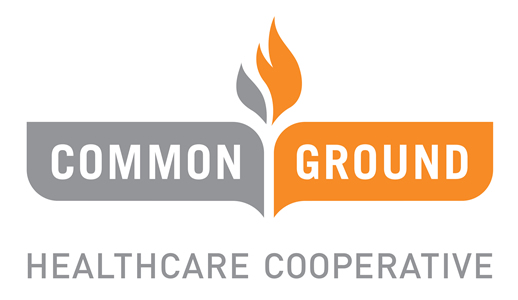
06 Oct Confused about what health plan is best for your group?
As an employer, selecting the right health insurance plan can be one of the most complicated decisions involved in starting a business. There’s a seemingly endless amount of acronyms, plan options and rules to decipher, and learning the differences between each one is headache-inducing.
But not to fear! We’ve taken some of the guesswork out by explaining the six most common plans employers look to when selecting and offering health insurance to employees—along with the pros and cons of each.
ICHRAs
An individual coverage health reimbursement arrangement (ICHRA) is a group health benefit that lets organizations of all sizes reimburse their employees tax-free for individual health insurance premiums and hundreds of other out-of-pocket medical expenses.
Pros
- Individualized: ICHRAs allow employees to choose the best policies for their individual needs. They have more control when selecting doctors, healthcare, and other expenses.
- Controlled Costs: Employers can choose an allowance for each employee. These employers then have more control over their health insurance budget.
Cons
- No combined plans: To qualify for an ICHRA, employees are obligated to purchase an individual plan or be enrolled in Medicare Part A and B or Part C.
- Uninsured employees, employees on their spouse’s group medical plan, or individuals with a health sharing plan are also excluded.
Check out the this Episode of “Coffee with Cathy” in which Cathy and Host Pat Miller discuss the ins and outs of ICHRA’s.
Fully Insured
A fully insured healthcare plan is the most traditional way of insuring employees. An employer pays a fixed premium to an insurance company, and the company then covers the employees’ medical claims.
Pros
- Certainty: Fully insured plans are more financially predictable than other plans. Employers pay a fixed premium, and the risk of unexpected or larger claims falls on the insurance company.
- Hands-off: Employers don’t deal with administrative tasks and expenses. claims are managed by the medical care provider and insurance provider which allow employers to focus solely on their business
Cons
- Could be more expensive if you have a healthier population.
- Restrictive: The employer also has less control and choice over the plan design, network, and rates, as the insurance company sets these parameters.
Self-Funded (or Self-Insured)
A self-funded insurance plan allows employers to implement their own health plan and take on all financial risk for employee benefits. The advantageousness of self-funded health plans largely depends on how healthy a business’ employees are, and how much control an employer wants over the company’s health benefits.
Pros
- Flexible: These plans are less rigid than traditional, fully insured plans because they don’t need to fit an insurance carrier’s pre-made plan options. Employers can therefore offer a benefit plan that meets their employees’ specific health needs.
- Thrifty: Self-funded plans can offer additional savings on premium costs.
Cons
- Hands-on: Because these plans don’t align with an insurance company’s pre-designed package, they can require more administrative work for employers. Employers are responsible for determining the fixed and variable costs of the plan.
- Financial risk: exposes the employer to more financial risk and volatility, because the employer is responsible for paying for the medical claims of its employees.
QSEHRA
A qualified small employer health reimbursement arrangement (QSEHRA) lets employers reimburse their employees tax-free for monthly premium costs, qualifying medical services, and other allowable out-of-pocket medical expenses. These plans are for businesses with 50 or fewer full-time employees.
Pros
- Allowance: There are contribution limits to the amount of money employers can spend on their QSEHRA allowance, but there aren’t any minimums. Additionally, small businesses can alter their monthly contribution amount any time of the year.
- Optimized: Employees get to choose the health policy they feel is best for them.
Cons
- Exclusive: QSEHRAs can’t be offered at the same time as a group health insurance plan, so you’ll need to choose only one.
- Allowance Caps: Small businesses are limited to how much tax-free money they can offer their employees. The IRS stipulates these annual contribution limits each year. For instance, in 2023 employers can offer up to $5,850 for self-only employees and $11,800 for an employee with a family.
Health stipends
Health stipends can be an optimal choice for small business owners who can’t afford to offer formal health benefits to employees. Instead, they give them a taxable stipend for healthcare costs. Employees receive a pre-determined, taxable allowance to purchase their own individual health plan and out-of-pocket medical expenses.
Pros:
- Personalized: Employees can shop around to find the best policy for their individual needs.
- Straightforward: Health stipends can be managed through automatic payroll.
- Inclusive: International workers and 1099 contractors can receive benefits without affecting their job status. This is because a health stipend isn’t a formal health benefit and can therefore be customized without contribution minimums or limits.
Cons:
- Employee Accountability: Employees aren’t legally required to use their stipend to buy health insurance.
- Subjective: Prospective employees might not see a stipend as an actual benefit because it’s taxable.
SHOP
The Small Business Health Options Program (SHOP) is a good option for small business owners who want to provide health insurance and/or dental coverage to their employees in an affordable, flexible way. To qualify, a business must have no more than 50 employees.
Pros
- Accommodating: Using SHOP coverage allows employers to offer employees one or more fully insured plans. In addition, an employer has the option to offer only health, only dental, or both.
- Benefits: In a SHOP exchange, small businesses can compare health insurance options and apply for small business health insurance tax credits.
Cons
- Location: Businesses are required to have an office or worksite in the state where the owner is applying for coverage.
- Obligatory: If a business owner offers SHOP coverage, it must be offered to all full-time employees.
The Bottom Line
The old days of one-size-fits-all insurance plans are gone. Nowadays employers and employees alike can choose from a variety of plans best suited to each party. Whether you choose a fully insured option, health stipends or any of the six options on this list, the first step (which you’ve taken!) is understanding your choices.
Sources
https://www.irs.gov/pub/irs-drop/rp-22-38.pdf (QSEHRA 2023 allowance cap)
https://hbr.org/2020/12/give-employees-cash-to-purchase-their-own-insurance
https://www.investopedia.com/best-health-insurance-for-small-business-owners-4846573
https://www.businessnewsdaily.com/15787-small-business-health-insurance-guide.html
https://www.uschamber.com/co/run/human-resources/small-business-health-insurance-options
https://datapathadmin.com/ichras-big-benefits-for-all-businesses/
Back to What’s new, Tips & Stories.


